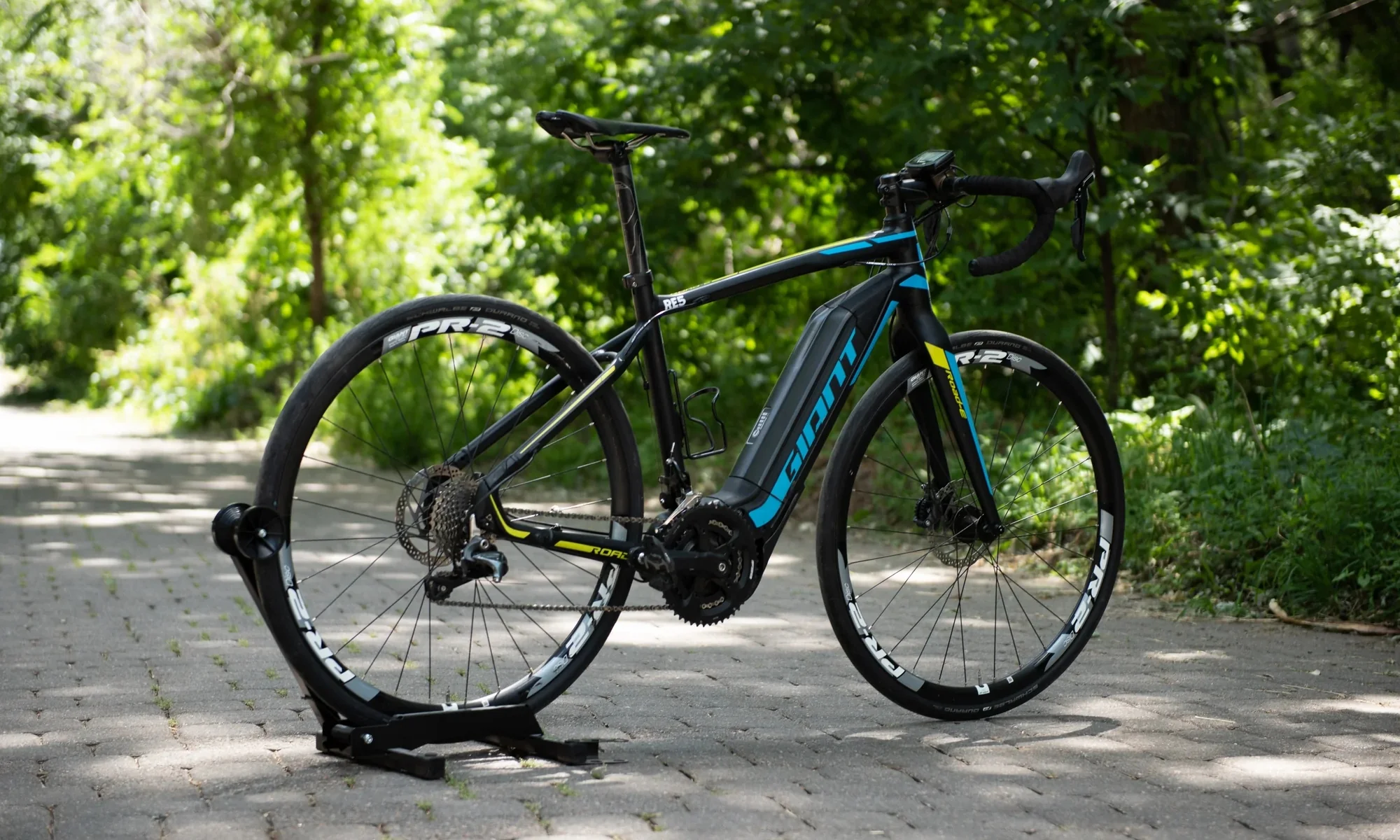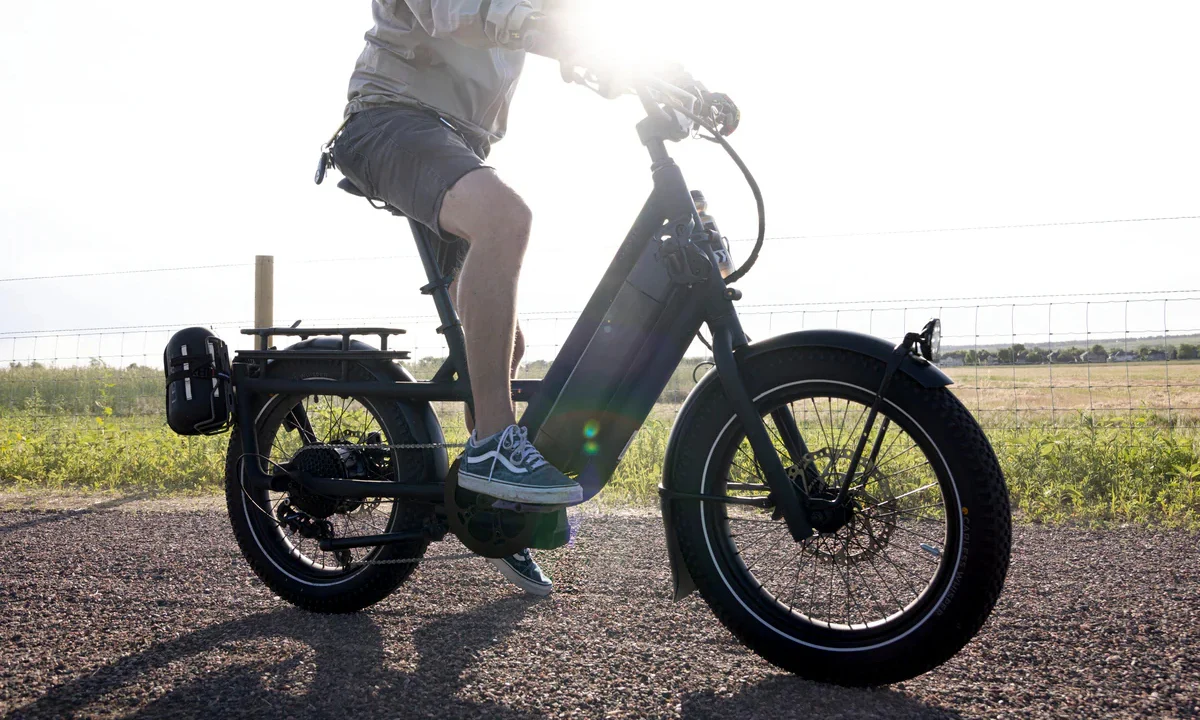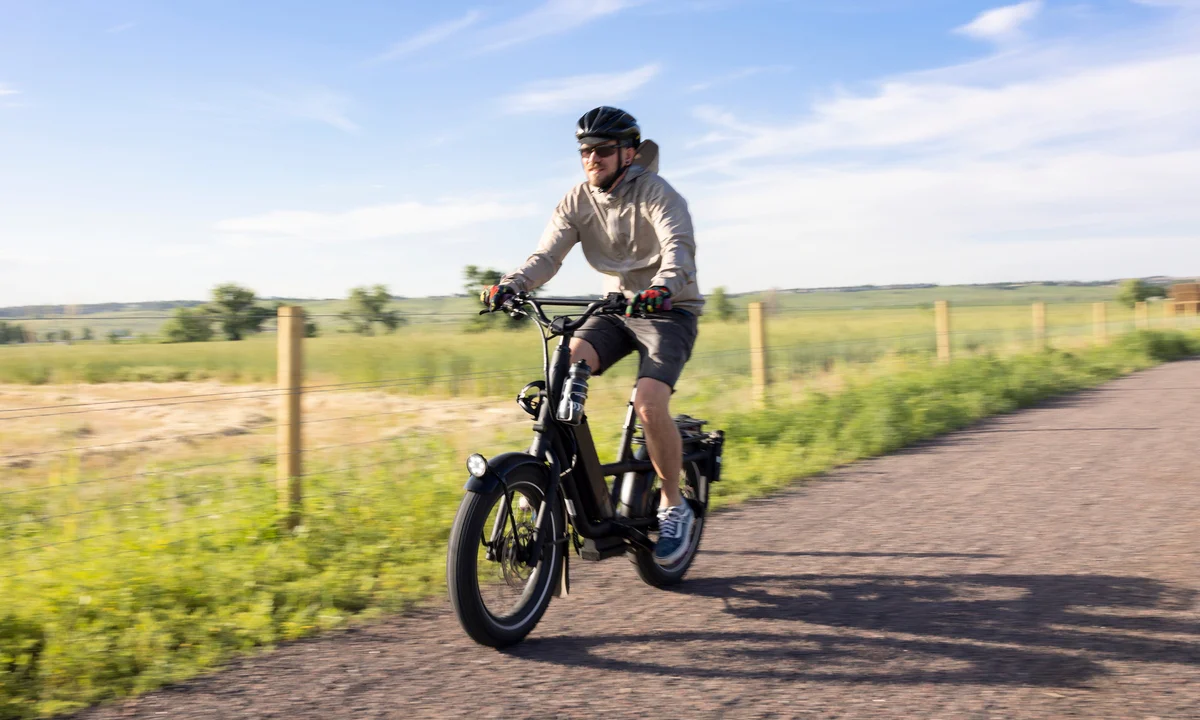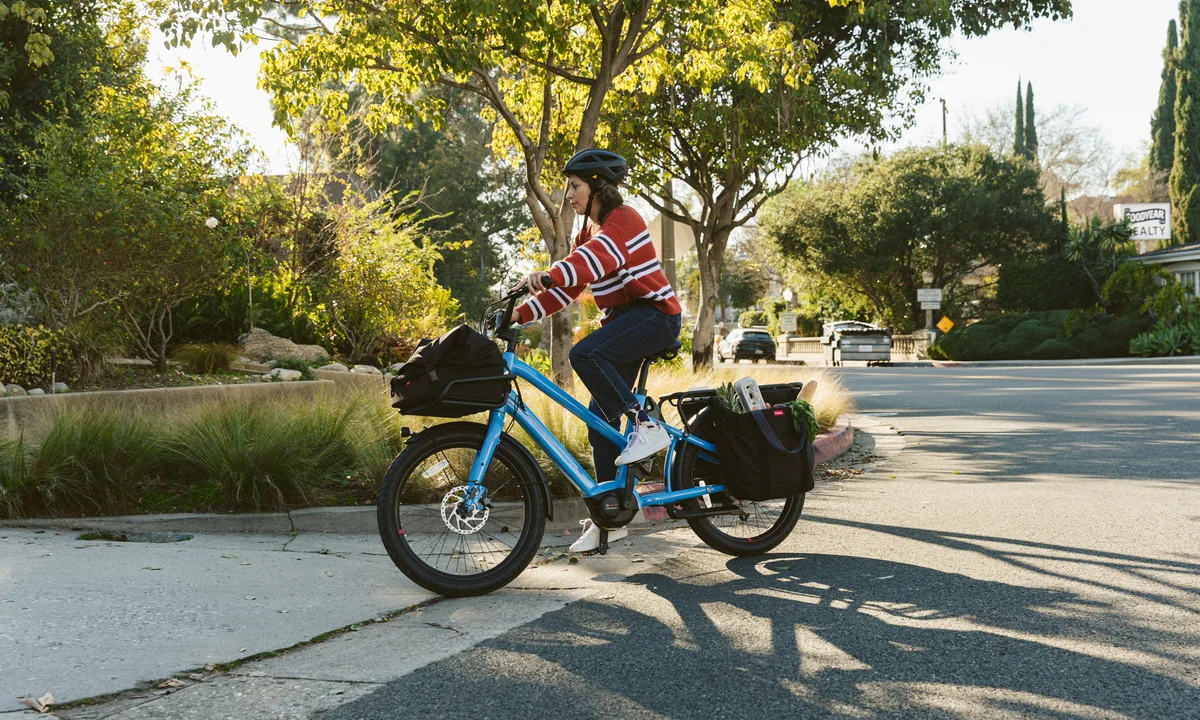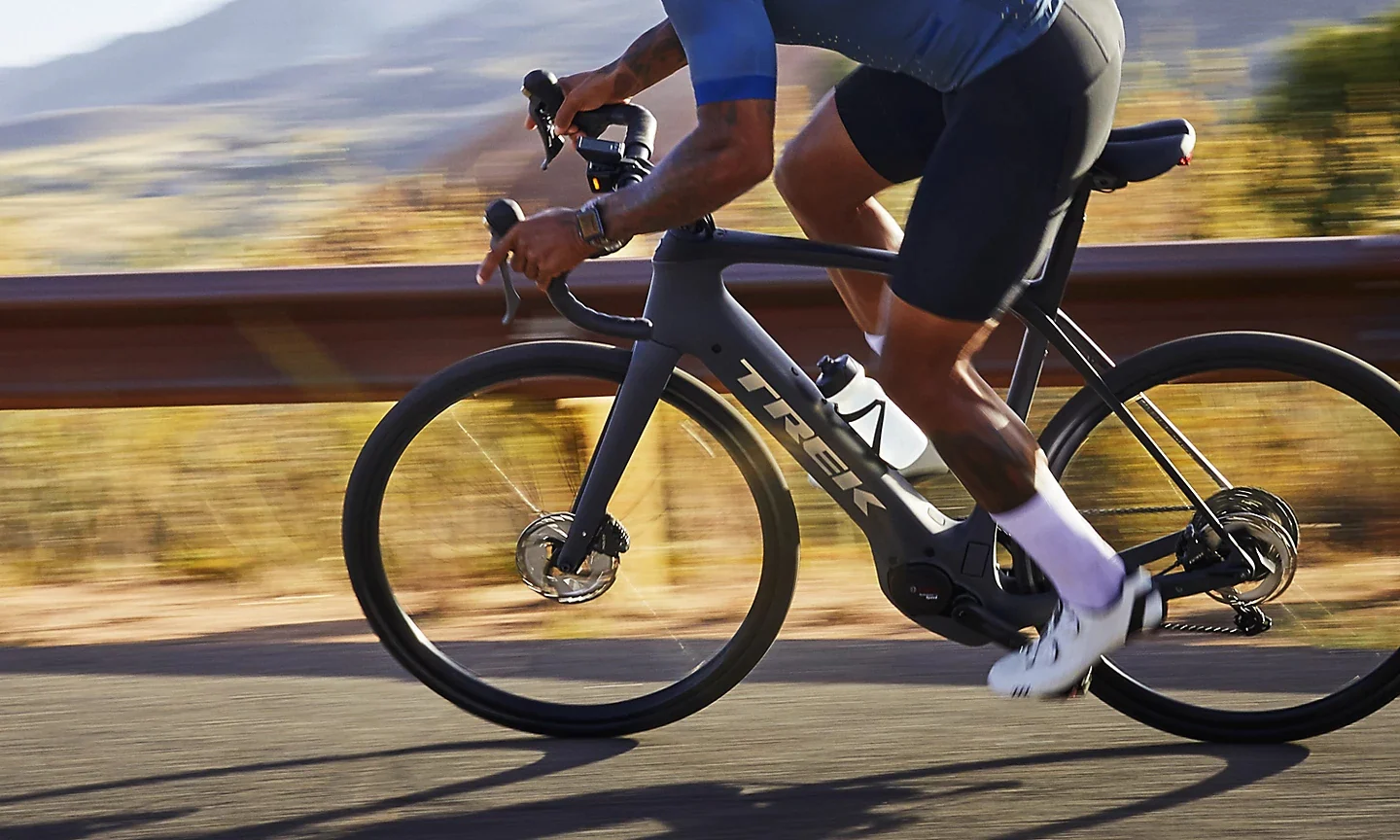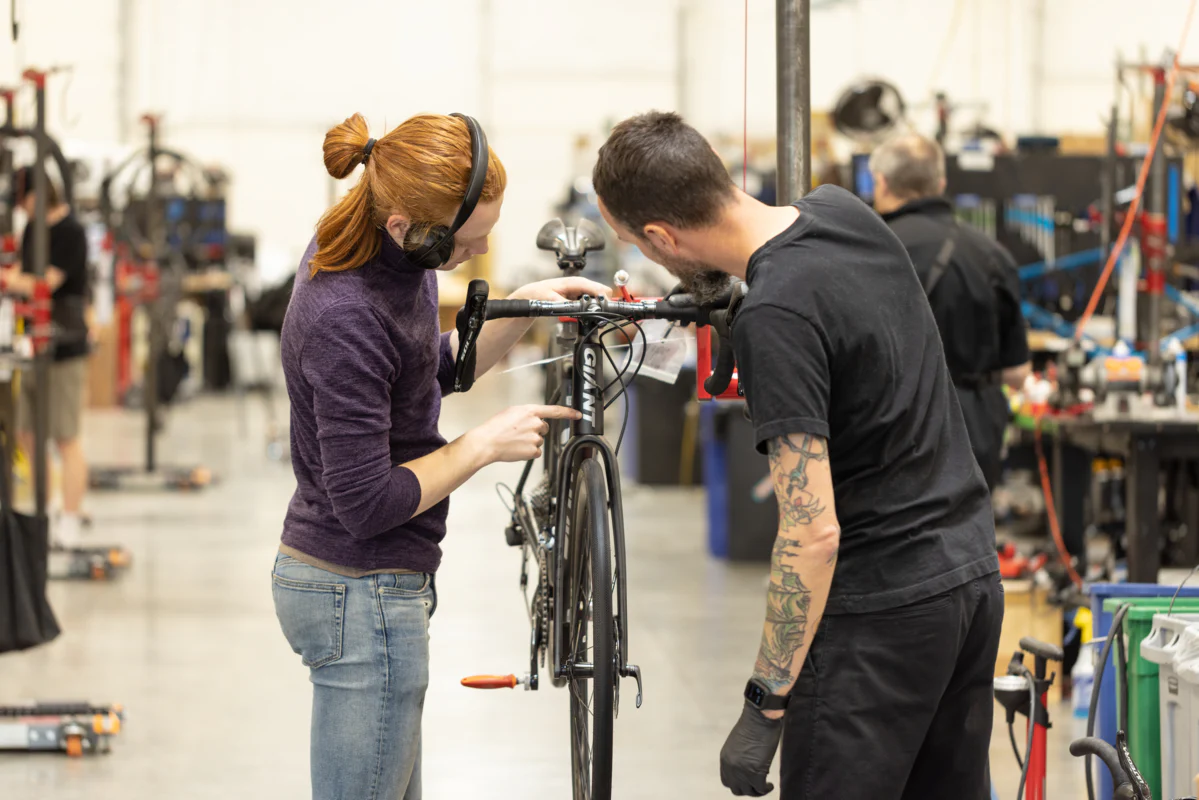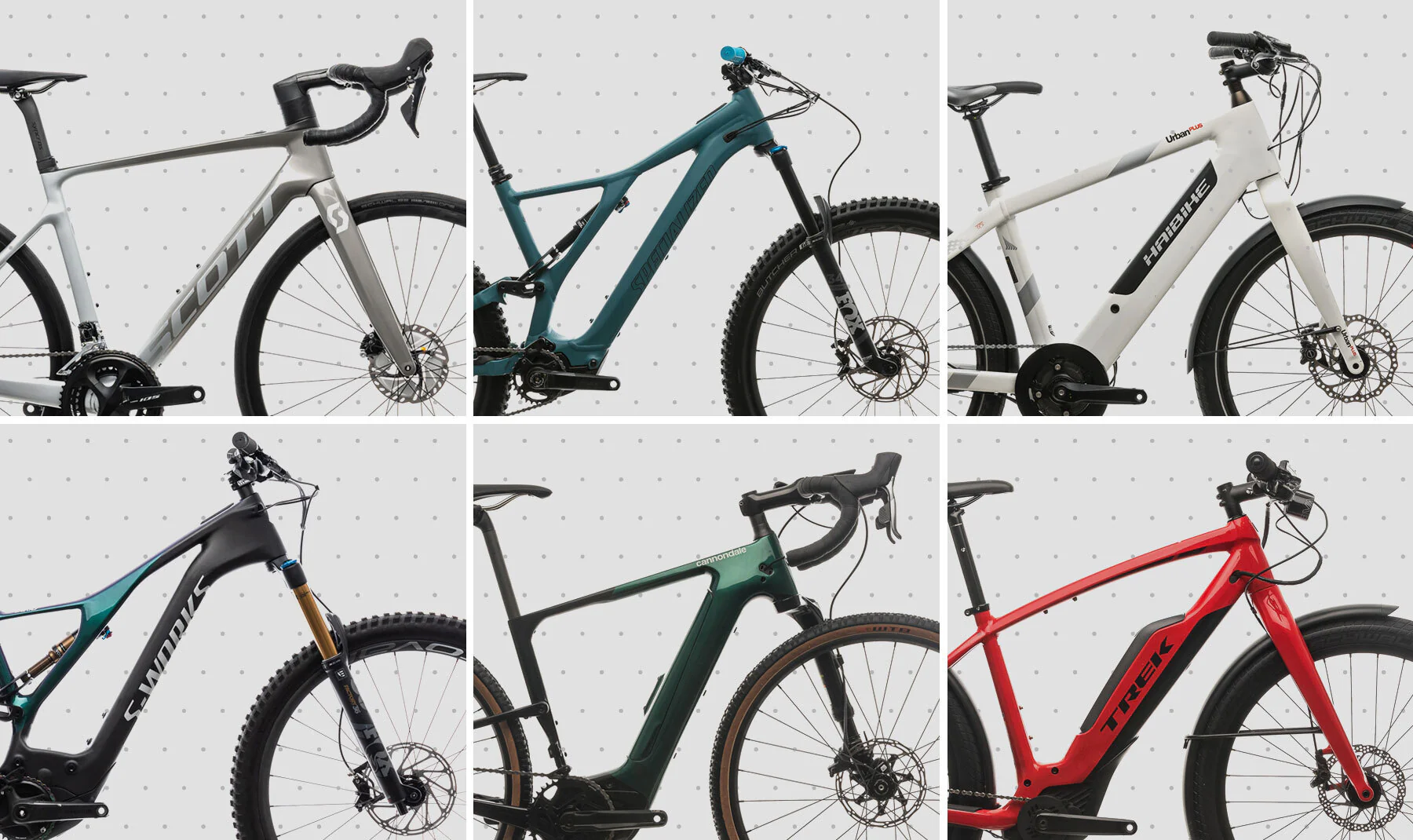You may be an expert when it comes to bikes, but e-bikes are a different ball game. If you’re shopping for a new or used e-bike, you may encounter some befuddling terms. Most of the e-bikes you’ll see on the road or trail, and all e-bikes sold at TPC are either Class 1 or Class 3 pedal-assist e-bikes (which will be explained below). These e-bikes are perfect for riders who want the experience of pedaling a bicycle, just enhanced with the power of an electric motor. To help you better understand these types of e-bikes, here’s a glossary of all the key e-bike terminology you need to know.
Basic e-bike terminology

E-bike classes and top speed
E-bikes are divided into classes, which refer to the level of motor assistance and the bike’s top speed:
Class 1: Pedal-assist only. The motor provides assistance up to 20mph.
Class 2: Pedal-assist mode up to 20mph and a throttle-powered mode.
Class 3: Pedal-assist only. The motor provides assistance up to 28mph.
Most cyclists will be looking for Class 1 and Class 3 e-bikes that are pedal-assist only. Many bike trails in the U.S. only allow pedal-assist e-bikes (check your local e-bike laws!). TPC does not carry any Class 2 e-bikes that use a throttle.
The main difference between Class 1 and Class 3 e-bikes is the “top speed” of 20mph vs. 28mph. Top speed is in quotes because, naturally, you can go faster by pedaling harder or going down a steep hill. However, after that top speed, the motor will stop helping you. This speed governor means e-bikes are classified as bicycles instead of motor vehicles that require licensing and registration. You will be able to tell whether e-bikes are Class 1 or Class 3 by the listed top speed.
Pedal-assist / Pedelec
Class 1 and Class 3 e-bikes are called “pedal-assist” because when you pedal, the electric motor engages to assist you with a boost of power. The harder you pedal, the more the motor assists you. You ride it like a regular bicycle and control your speed with your legs, so there’s no learning curve. This type of e-bike also tends to be safer because there’s less risk of "whiskey-throttle" — something that your moto friends will tell you about. Some brands and cycling publications may refer to pedal-assist e-bikes as “Pedelecs.”
Modes / Drive modes
Most e-bikes offer different levels of pedal assistance from the motor, called “modes” or “drive modes.” These modes can be selected using a handlebar-mounted switch and are usually visible on a handlebar-mounted display. Common names for these modes are Eco, Standard / Trail, and Boost / Turbo. Eco mode reduces the level of pedal assistance and increases battery life. Boost / Turbo mode increases the level of pedal assistance to improve acceleration but reduces battery life.
Push-assist / Walk mode
Bike riders often encounter situations like stairs, tight corners, or technical trails where they have to dismount and push their bikes. Because e-bikes weigh more than traditional bikes, many have a low-power push-assist or walk mode that provides a small boost from the motor to make walking with the bike easier
E-bike motor terminology explained
Mid-drive motor

Mid-drive motors are integrated into the bottom bracket area of the frame along with the bike’s crank arms. This is the most common motor set-up for modern pedal-assist e-bikes. Mid-drive motors keep the weight of the motor low, which lowers the bike’s center of gravity to improve handling and stability. They also tend to provide a quicker response, more torque and power, and the most natural pedaling feel.
Hub motor

Hub-mounted motors are located at the rear hub. These are often lighter and more discrete but tend to provide less power than larger mid-drive motors. In modern pedal-assist e-bikes, hub-mounted motors are generally used for e-bikes designed to look like standard bicycles or lightweight e-bikes designed to provide minimal assistance to suit more advanced riders.
Torque (Nm)
Torque is a turning force that causes rotation (i.e., rotating the rear wheel.) For e-bikes, torque is measured in Newton meters (Nm) and it refers to the maximum force the motor can apply to turn the rear wheel. Most mid-drive motors in Class 1 and Class 3 e-bikes are rated at 75-90Nm. Smaller mid-drive and hub-mounted motors that are used in lightweight e-bikes are usually rated at 35-40Nm.
Power (watts)
Power is the amount of work that can be done by the e-bike motor. It can be thought of as a torque multiplied by RPM (i.e., pedaling cadence). Power is measured in watts (w). Pedal-assist e-bikes are limited to 250w by law. This limited power means e-bikes are still classified as bicycles instead of motor vehicles that require licensing and registration. The vast majority of e-bikes use 240-250w motors. To help you understand how much power these e-bike motors have, fast amateur cyclists often have a threshold power (the maximum power they can hold for one hour) in the 250-300w range, and top pro cyclists have a threshold power in the 400w range.
E-Bike battery terminology explained

Voltage (v)
Voltage (v) measures the power flow from the battery to the motor. Higher voltage means more electrons can flow to the motor so that the motor can do its work. Many e-bikes use 36v or 48v batteries, but there are also e-bikes that use 24v or 52v batteries. Voltage is not super important for understanding e-bikes, because most e-bike batteries will list watt-hours (explained below) instead.
Amp-hours (Ah)
Amp-hours (Ah) is a measure of battery capacity. More amp-hours equates to a longer-lasting charge cycle (explained below). Most modern e-bike batteries offer between 11-14Ah. Amp-hours are not critical to understanding e-bikes, because most e-bike batteries will list watt-hours (explained below) instead.
Watt-hours (Wh)
Watt-hours (Wh) is a measure of overall battery capacity. It’s calculated by multiplying voltage by amp-hours. For example, a battery rated at 36v and 14Ah has a capacity of 500Wh (36x14=504). In a more general sense, watt-hours describe how big a battery is and how long it will last before it is drained. In theory, a 500Wh battery will last 2 hours if the e-bike motor draws a consistent 250W of power. In practice, other external factors will also have an effect on battery life (see “Range” below).
Higher Wh batteries are larger and heavier but last longer. Most Class 1 and Class 3 e-bikes will have batteries in the 300-900Wh range. 500Wh is extremely common. Smaller 300-350Wh batteries are common on lightweight e-bikes. e-bikes designed to travel long distances or carry cargo will have bigger 630-900Wh batteries.
Range
Range is the distance or time a battery will last. Range is primarily determined by battery capacity (Wh), but it’s also affected by the total weight of the bike and rider, the terrain (hilly vs. flat), and the drive mode (Eco vs. Boost). Because range will change according to these factors, many e-bike manufacturers don’t provide a claimed range or will provide a very broad range (e.g., 20-100 miles). Some e-bikes can display the estimated range remaining on the handlebar display.
Charge cycles
Battery life (as in how long a battery lasts before it should be replaced) is usually expressed in terms of charge cycles. Charge cycles refer to emptying and recharging the battery. A battery rated for 1,000 charge cycles should last through 1,000 recharges. Most modern lithium-ion e-bike batteries will last for 800-1,000 charge cycles. For most cyclists, this is enough for 3-5 years of consistent use

